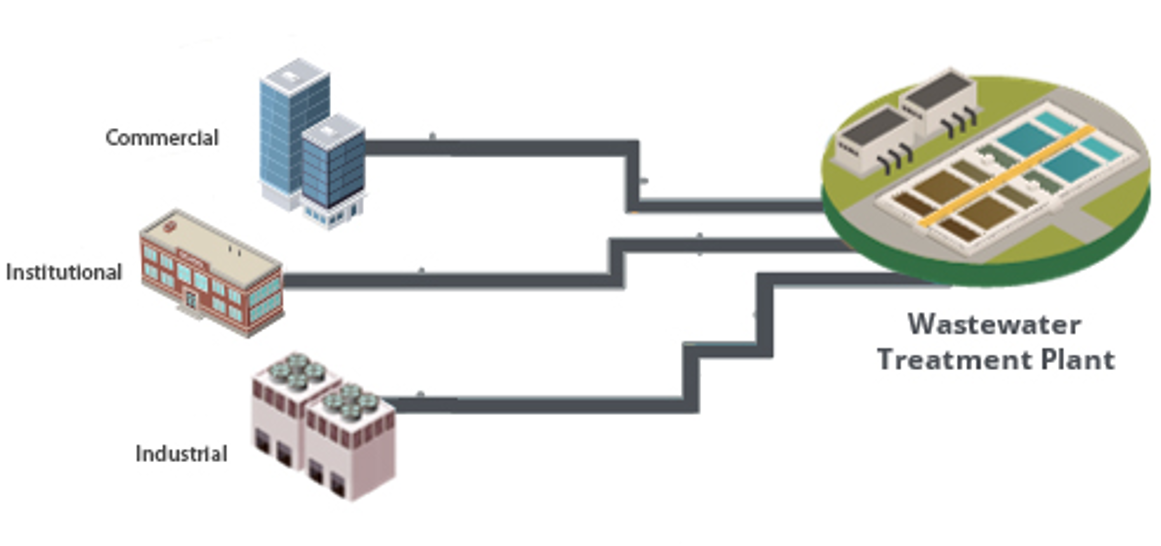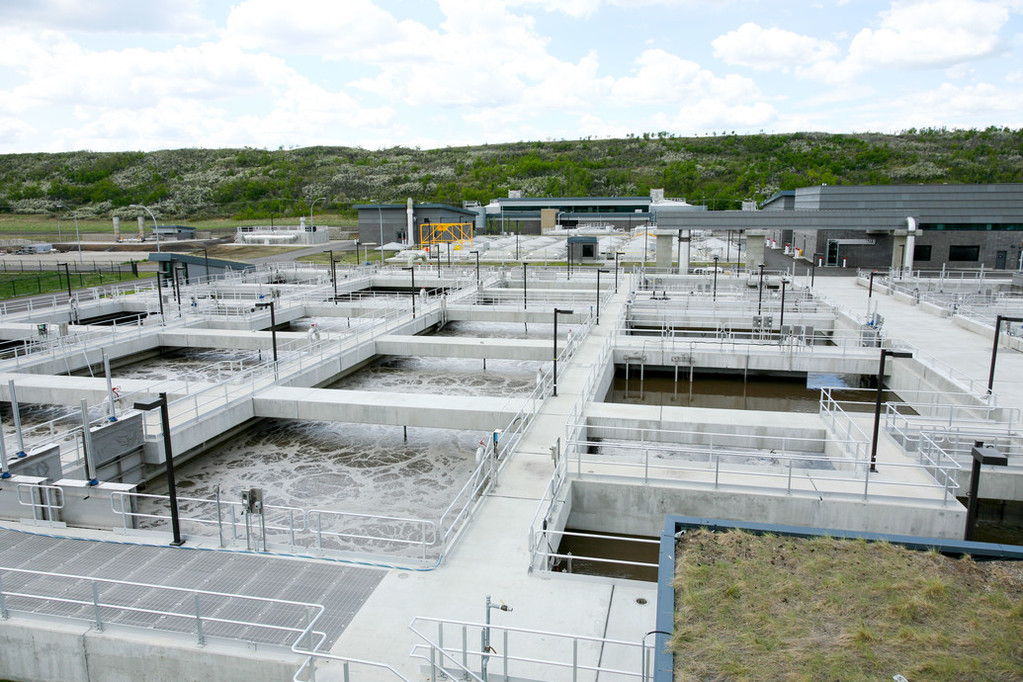Wastewater Surcharge Program
The Wastewater Surcharge Program aims to:
- Meet wastewater bylaw requirements to protect the health of our watershed.
- Identify, test, and monitor businesses that release extra strength wastewater to city wastewater system.
- Promote the importance of businesses having a pre-treatment system to treat their wastewater effluent on-site.
- Ensure surcharges reflect the cost of treating extra strength wastewater.

Wastewater surcharge testing
Periodically, two wastewater samples are collected on two separate days, at a designated wastewater manhole connected to the business. If a manhole is shared with multiple businesses, the sample taken will apply to all businesses who’s wastewater discharges into that manhole.
Samples are a composite of multiple samples taken over a period of time. Other methods can be used depending on conditions within the manhole.
These samples are analyzed for Total Suspended Solids (TSS), Biochemical Oxygen Demand (BOD) and Oil & Grease (O&G) by an accredited laboratory.
Wastewater surcharge billing
After samples are analyzed, the results are averaged and used to calculate a surcharge factor that is applied to a business’ water utility bill.
The surcharge factor is multiplied by the business’ monthly water consumption to result in the surcharge fee. This surcharge factor is used each month for a minimum of three months.
After three months, The City will collect and analyze a new set of samples. The surcharge factor will be recalculated and applied to the monthly water consumption as described above.
For manholes that are shared between multiple businesses, the surcharge fee will be calculated based on water consumption for all businesses that share that manhole.
Wastewater surcharge is billed in addition to regular wastewater charges.
Resources
The below PDFs were designed to be filled in with Adobe Acrobat Reader. Download the form to your desktop and use Adobe Acrobat Reader to open, complete and submit this form. If you are using Edge or Chrome browser some fields will not work as intended and your form may not submit.
City of Calgary Bylaws:
Permits
Forms
- E1995-Analytical Results Reporting Form
- E1996-Clear Water Waste Disposal Application
- E1998-Hauled Wastewater Disposal Manifest - FOG
- E1999-Hauled Wastewater Disposal Manifest - Septage
- E2005 Food truck log book
- E2225-Non-Compliant Wastewater Investigative Report Template
- E2226-Pool Drain Request Form
- E2227-Pre-Treatment Maintenance Record Sheet
- E2228 – Fats, oils and grease interceptor service record
- Nuisance Water Disposal Flowchart
Fact Sheets
Alberta Environment & Protected Areas
Frequently asked questions (FAQs)
How can I reduce my surcharge bill?
The Surcharge Program promotes the importance of industries having a pre-treatment system, good housekeeping and industry best management practices in place to treat wastewater onsite and help reduce the strength of wastewater discharged into our system. Reducing the amount of extra strength wastewater going into the wastewater system will reduce your monthly surcharge bill.
What is considered extra strength wastewater?
Wastewater discharge that exceeds the wastewater limits for three treatable parameters (see table below) set in the Wastewater Bylaw 14M2012 are considered extra strength.
| Treatable parameters | Bylaw Limits (mg/L) |
|---|---|
|
BOD - Biological Oxygen Demand |
300 |
|
TSS - Total Suspended Solids |
300 |
|
O&G - Oil & Grease |
100 |
When are wastewater surcharges calculated?
A surcharge is applied to a customer’s monthly water consumption, in addition to regular sewer service charges, if wastewater strength is found to be greater than the bylaw limits.
Further information on how the wastewater surcharge is calculated can be found in ‘Schedule F’ of The City of Calgary’s Wastewater Bylaw.
Do I qualify for the Effluent Metering Program?
The Effluent Metering Program is for business customers who return less than 80% of their incoming water to the wastewater system and use an average of 4000m3 of water per month. Some wastewater surcharge customers may qualify for participation in this program, however flow data from the business must be provided for review prior to an application being submitted. Participation in this program will provide a partial exemption from the wastewater utility charges under Subsection 40 of the Wastewater Bylaw 14M 2012. Additional details of the program and its requirements are outlined here.
How is surcharge calculated if I am on the Effluent Metering Program?
Participants in the Effluent Metering Program pay only for the wastewater that is measured through a dedicated meter at their site. Sampling and testing are completed in the same manner, but the calculated surcharge factor is multiplied by the measured volume of water from the effluent meter rather than by the water consumption.
What are the changes coming to the surcharge program?
- Total Kjeldahl Nitrogen (TKN) and Total Phosphorus (TP) will be added to the surcharge calculation to reflect the cost of treatment to reduce their impact on river health.
- The surcharge calculation will be simplified to ensure customers understand the amount paid for each substance.
- Customer self-sampling and electronic reporting is being implemented.
Can I see the details of how the surcharge formula is calculated?
Full details of the surcharge formula and how it is calculated can be found in Wastewater Bylaw 14M2012, Schedule F
- R = 0.1143B + 0.1147S + 0.1947G
- R – rate in cents per cubic meter
- B – amount of BOD (mg/L) that exceeds 300 mg/L
- S – amount of TSS (mg/L) that exceeds 300 mg/L
- G – amount of O&G (mg/L) that exceeds 100 mg/L
- Numeric multipliers – represent cost to treat wastewater for each contaminant
- ODF = (R x V)/100
- ODF – Overstrength Daily Surcharge Factor ($/day)
- R – rate in cents per cubic meter
- V - daily volume of billed water consumption (m3/day) OR measured effluent meter volume (m3/day)
- 1/100 – converts cents into dollars
- Monthly surcharge ($) = ODF x # Days in Billing Cycle
- ODF – Overstrength Daily Factor ($/day)
- # Days in Billing Cycle – between 28 - 35
How and where are wastewater discharge samples taken?
Periodically, discrete composite wastewater samples are collected over a 24 hour period from an appropriate sample location point and analyzed in a City laboratory.


